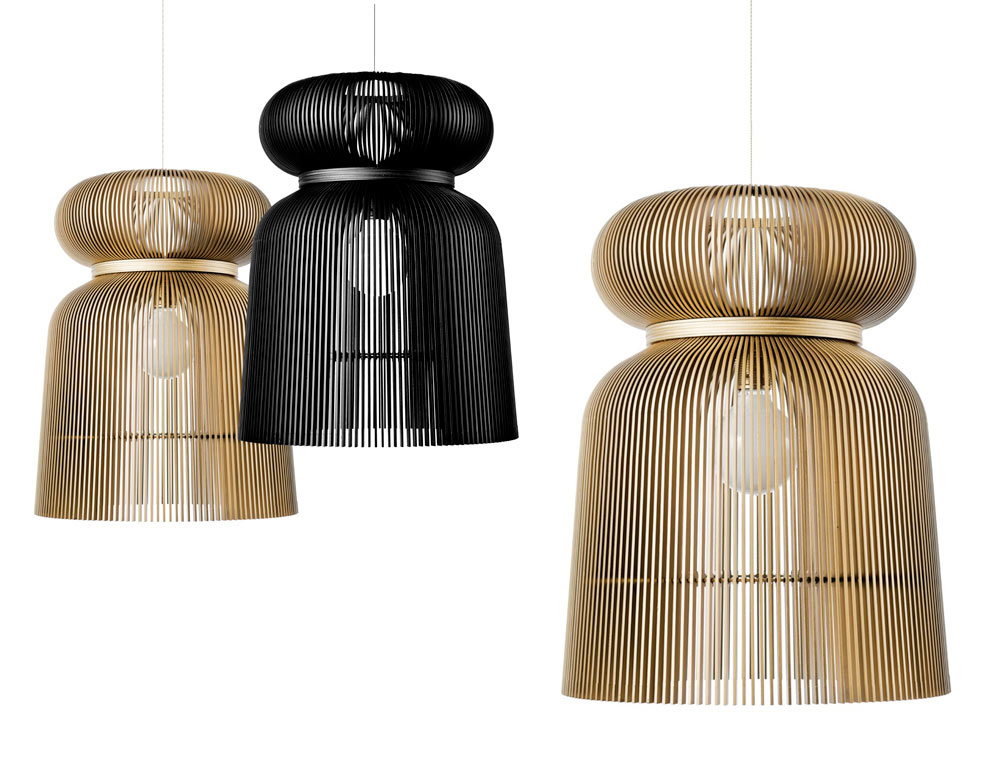Ep. 53: Nika Zupanc
Product designer and installation artist, Nika Zupanc, has always had a strong emotional reaction to furniture, both positive and negative. Born and raised in former Yugoslavia, she was attracted at a young age to books, cinema and art and that sense of drama and narrative shows up in her work. Her path to design is a pretty straight line; determined, focused and passionate, punctuated by a rebellious use of pink, and a fierce protectiveness of her creativity through time spent in nature and the gym.
Follow Nika on her website, Twitter, Facebook and Instagram.
What is your earliest memory?
Waking up as a very small child in my bed in our summer house in Piran, in my own room. I remember the beauty of sun rays and shadows playing on the wall.
How do you feel about democratic design?
I think design is always there to communicate with a large audience. As a profession, it has a very loud and strong voice and can cover many topics.
So - call it whatever you want - but I think design in general is there to speak with and to everyone.
What’s the best advice that you’ve ever gotten?
"Try to be the best you can be, not the best out of all, but the best you can be." It wasn't advice given to me directly, it is a thought I once heard in an interview with Marcel Wanders, but I think it is very substantial advice that applies to many areas in life, from sports to design.
How do you record your ideas?
I store them in my mind. Sometimes I make a quick sketch...
What’s your current favorite tool or material to work with?
I do not have any favourite tools or materials, I am always excited by new technologies, new materials, new projects, and the things on my table. I go with the flow—new and unkown excites me.
What book is on your nightstand?
I have Murakami’s book What I Talk About When I Talk About Running on my night stand now for the second time. Murakami says his book does not entail any special philosophy. It does entail, however, a certain level of sincerity. And as this may not be much, it is something he has learned by moving his body and experiencing suffering as a personal choice. I too now move my body, and a bit more than usual. And I, too, experience my suffering as my own choice.
Murakami writes that for a person of a profession such as his own, an alienation from the world is more or less inevitable. That he had to relieve his desire for solitude and relativize it. He has done so by driving his body to the utmost limits. And not so much intentionally then rather instinctively. Me too! When sad, he runs for a little while longer, “pruning” his body of this sadness. He says he is the type of person who needs physical exertion, who must first hear the groaning of muscles before the light bulb goes off. I am just the same.
I have read in his interview for The Guardian he wants to be a perfect thinker—that he must write good sentences: honest, elegant, strong sentences. So do I. I must make my designs honest, strong and elegant.
Why is authenticity in design important?
Absolutely, it is a necessity.
Favorite restaurant in your city?
As aperitivo in Ljubljana, Langosteria in Milano.
What might we find on your desk right now?
A current project I am working on: An interior for a luxury residence in Zagreb, a collection of glasses, surf and sup boards, among others.
Who do you look up to and why?
Actually, I look up to many people that are close to me... on daily basis. I am happy to say that I am surrounded with people with beautiful spirits and character, and they are many times—every day, I'm inspired.
When it comes to people we all know, my heroes range from Coco Chanel to Lindsey Vonn. In both cases, I admire their persistence, strength, determination, will, focus and style.
What’s your favorite project that you’ve done and why?
It is almost impossible if not unjust to name one project as the most dear to me, but if I have to choose one today, I would pick the Ribbon chair [pictured above], which is now officially my first injection-moulded piece of furniture. But, it is not that making it so special to me, it is more more the simple fact, that since the beginning it was envisioned as a statement against rationalism that is still ruling the world of product design.
Using a bow as a center symbol of a contemporary chair design seemed as rather daring gesture to do in a society, that is still ruled by overrated rationalism and technicism. With a bit of humor, one could even call it a ‘revenge design’.
What are the last five songs you listened to?
1.Tomorrow never came - Lana del Rey
2. Depth of my - Soul Saudade
3. Suburbia - Pet Shop Boys
4. You Put a Smell on Me - Matthew Dear
5. Heroes - David Bowie
Special thanks to Tai Navares and Alex Perez for editing this episode.
Music in this episode courtesy of El Ten Eleven—hear more on Bandcamp.
Shoutout to Jenny Rask for designing the Clever logo.















